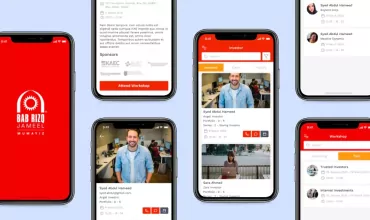E-Learning Opensource Solutions
Table of Contents
Suppose you are running chains of call centers. Your staff is working in multiple shifts, about various locations and residing across various countries. Moreover, you experience staff turn over, introduction of new products, services and frequent update of procedures. In these challenging situations you need constant training of your staff to combat the ever changing situation, learning skills, to know the products and services, beware of internal changing, etc.
In another scenario you own a small or big enterprise where product knowledge is a critical part of the success of company. For that you not only need to give product knowledge and information, updates to your customers but to your staff too. Your employees should be trained for your products in a manner that they do not lose the productivity.
In both the scenarios you may try to disperse your training material through:
- Email, the handiest tool for exchange, but you will not be able to know that they have opened or learned it well.
- Formal presentation, this again is time consuming and sometime impossible if staff is dispersed at various locations or across the countries and in different time zones.
- Intranet, it seems like a good idea but practically intranet has limited access as well as you will not be aware that they get its benefits or not.
To overcome all these loopholes you need a learning system that can prove to be cost effective and beneficial to your business by and large and that will be an e-learning solution. According to studies, learners absorb knowledge and skills better when they do not feel threatened by the learning environment or setup. Threatening factors like stress, fear of failure and poor motivation in learners are eliminated in e-learning.
In fact, e-learning or online learning is a bundle of software tools that enables the management of learning activities and services. Most of the e-learning management system incorporates the learning content management system (LCMS) that is a set of software tools that enables the storage, use and reuse of subject matter content. Most LCMSs have the following features:
- Course content delivery capabilities
- Management of online class transactions
- Tracking and reporting of learner progress
- Assessment of learning outcomes
- Reporting of achievement and completion of learning tasks
- Student records management
Looking at above given characteristics it is ideal for government agencies, distance learning universities as well as other universities and schools which can contribute in e-learning sphere or want to solve their on or off campus problems to adapt e-learning as a part of their curriculum.
Opensource development is buzzword in the present context. Therefore, use of opensource in e-learning is a natural phenomenon.
Benefits of Opensource Solutions
- There is no license requirement in opensource so there is low initial investment.
- Customization is easy so you can make them adaptive to your requirements
- It has large developer communities therefore you can get enough support.
- It can use at any scale of application therefore it is widely accepted in higher educational establishments like universities.
- You can integrate with any kind of databases like MySQL etc.
- Interoperability is a high priority for many open source developers



